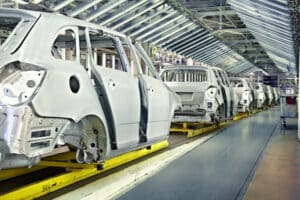Photoelectric Sensor Applications
Photoelectric sensors have become an important part of the manufacturing industry in recent years. They help the manufacturers detect the presence (or absence) of objects.
Photoelectric sensors convert light signals (visible or infrared), into electrical signals. Photoelectric sensors detect objects at a distance using the light from a transmitter. They are therefore an ideal tool for automation, as they provide highly reliable results.

Photoelectric Sensor Applications
Photoelectric sensors are characterized by their sensitivity, speed, and spectral response. When choosing a photoelectric for a particular manufacturing application, you should take into account all these features.
Take a closer look at each of these components in a sensor photoelectric:
- SensitivityThe sensitivity is related to the output magnitude, which changes with the intensity of the light that hits the sensor. Simply put, the sensitivity ratio is the output magnitude to the input magnitude.
- Velocity Photoelectric sensors are designed for rapid variations in light and their response time/velocity plays an important role in certain applications.
- Spectral Response:The ability of a sensor to “see” is the third characteristic. The majority of photoelectric sensor on the market can detect both ultraviolet and infrared radiation.
What are the applications for photoelectric sensors?
In the automotive industry, photoelectric sensors are used extensively. Each component of a vehicle must be carefully transported along the production line. Retroreflective sensors equipped with a polarization filters are used in this application to regulate the speed.
Second, photoelectric sensors ensure safe machine operation in theme parks. Photoelectric sensors detect the position of the roller coaster carriage and ensure that it is removed or placed correctly.
Logistics is a third industry that uses photoelectric sensors extensively. These sensors are used to improve automated storage, which allows for easier access to products on shelves. The sensors are integrated into the data couplers that support wireless data transmission. The data couplers are able to track and communicate with the objects that are in transit, making it easier to store and transfer goods.
Photoelectric sensors are used for automatic doors and elevators. Buses, for example, have automatic doors which detect motion and open or close themselves automatically. Photoelectric sensors make this possible. They scan the area around the entrance and open or close the door when they detect movement (such as when passengers board or deboard a bus).
Conclusion
They must have the best lenses because they rely on them to detect objects accurately. We can help. We at SUPERIOR optics design high-quality lenses for photoelectric sensor to meet your specific needs, regardless of the size or industry in which you work.
Related Posts
Photoelectric Sensor Applications
How useful was this post? Click on a star to rate it! Submit Rating As you found this post useful......
3D Printing
How useful was this post? Click on a star to rate it! Submit Rating As you found this post useful......




